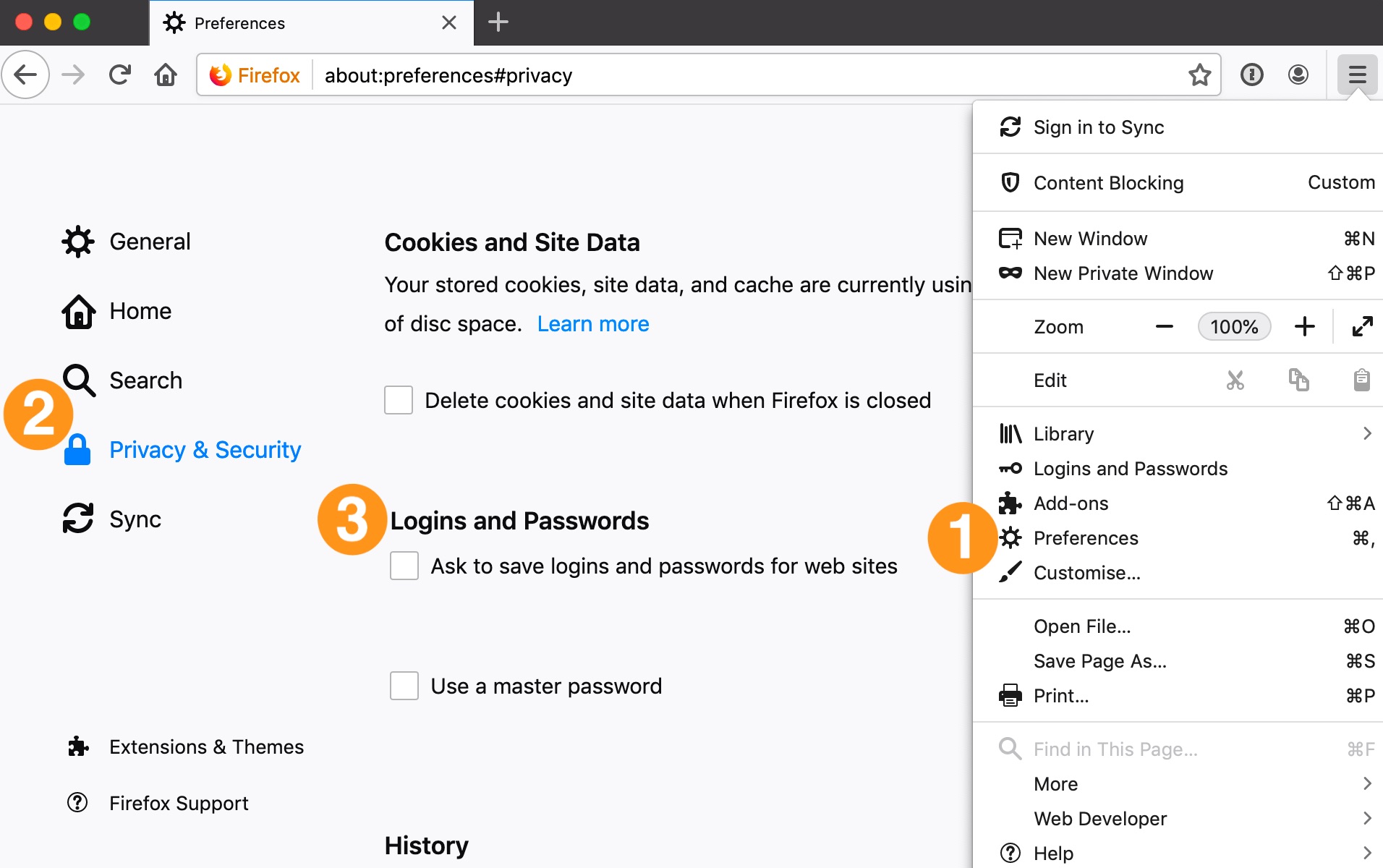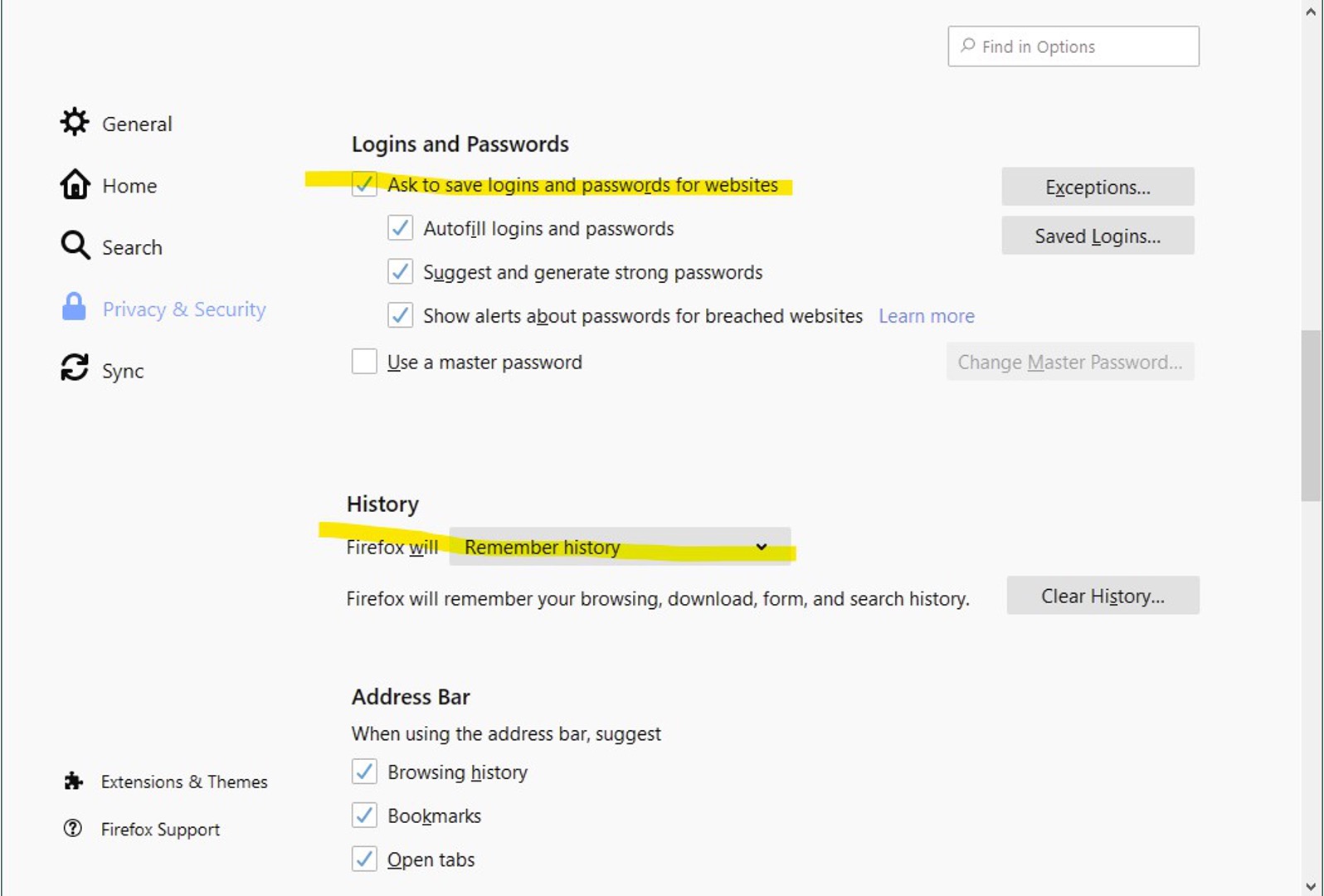Introduction
When it comes to browsing the web, security and privacy are paramount. One of the many features that web browsers offer is the ability to remember passwords for various websites, making it convenient for users to log in without having to re-enter their credentials each time. While this can be a time-saving feature, some users may prefer not to have their passwords stored in their browser for security reasons. If you're a Firefox user and you're looking to prevent the browser from remembering your passwords, there are several methods you can employ to achieve this.
In this article, we'll explore different approaches to stop Firefox from remembering passwords. Whether you're concerned about the security implications of having your passwords stored in the browser or you simply prefer to manage your login credentials in a different way, the following methods will help you take control of your password management in Firefox. From disabling the built-in password manager to utilizing private browsing mode and third-party password management tools, we'll cover various strategies to cater to your specific preferences and security needs.
By understanding and implementing these methods, you can enhance your browsing experience while maintaining a heightened sense of security and control over your sensitive information. Let's delve into the details of how you can customize your Firefox browser to align with your password management preferences.
Disable Password Manager in Firefox
If you prefer not to have Firefox remember your passwords, you can disable the built-in password manager feature. Here's how you can do it:
-
Accessing Firefox Options: To begin, open your Firefox browser and click on the three horizontal lines in the top-right corner to access the main menu. From the menu, select "Options" to open the settings panel.
-
Navigating to Privacy & Security Settings: In the left-hand sidebar of the options panel, click on "Privacy & Security." This will bring up various privacy and security settings for your Firefox browser.
-
Disabling the Password Manager: Scroll down to the "Logins and Passwords" section. Here, you'll find the option to "Ask to save logins and passwords for websites." Uncheck this box to disable the password manager feature in Firefox.
-
Confirming the Changes: Once you've unchecked the box, the changes will be automatically saved. You can then close the options panel.
By following these steps, you can effectively disable the password manager in Firefox, preventing the browser from prompting you to save passwords for websites. This gives you greater control over your login credentials and ensures that Firefox does not store this information.
Disabling the password manager can be particularly useful if you prefer to manage your passwords using a dedicated password manager application or if you have concerns about the security implications of having your passwords stored within the browser. Additionally, some users may simply prefer to enter their passwords manually for each website they visit, and disabling the password manager allows them to do so without being prompted to save their credentials.
Overall, by customizing the password management settings in Firefox, you can tailor your browsing experience to align with your specific preferences and security considerations. Whether you choose to disable the password manager, utilize private browsing mode, or explore third-party password management tools, Firefox offers a range of options to accommodate your individual needs and enhance your online security.
Clear Saved Passwords in Firefox
Over time, you may accumulate a list of saved passwords in your Firefox browser. If you've decided to clear this stored data for security or privacy reasons, Firefox provides a straightforward method to accomplish this. Here's how you can clear saved passwords in Firefox:
-
Accessing Firefox Options: Start by opening your Firefox browser and clicking on the three horizontal lines in the top-right corner to access the main menu. From the menu, select "Options" to open the settings panel.
-
Navigating to Privacy & Security Settings: In the left-hand sidebar of the options panel, click on "Privacy & Security." This will bring up various privacy and security settings for your Firefox browser.
-
Managing Saved Logins: Scroll down to the "Logins and Passwords" section. Here, you'll find the option to "Saved Logins." Click on "Manage Saved Logins" to view the list of websites for which you have saved passwords.
-
Removing Saved Passwords: You can now review the list of saved logins and passwords. To remove a specific saved password, select the entry and click on the "Remove" button. If you prefer to clear all saved passwords, you can choose the "Remove All" option.
By following these steps, you can effectively clear saved passwords in Firefox, ensuring that any previously stored login credentials are removed from the browser. This can be particularly useful if you share a computer with others or if you simply want to maintain a clean and secure browsing environment.
Clearing saved passwords in Firefox allows you to reset your password management preferences and start afresh with managing your login credentials. Whether you're transitioning to a new password manager, addressing security concerns, or simply seeking to declutter your saved data, this feature empowers you to maintain control over your browsing security and privacy.
By understanding how to clear saved passwords in Firefox, you can proactively manage your online security and privacy, ensuring that your browsing experience aligns with your preferences and requirements. This level of control over your saved passwords contributes to a more personalized and secure browsing environment, empowering you to navigate the web with confidence and peace of mind.
Use Private Browsing Mode
When it comes to browsing the web with enhanced privacy and security, Firefox offers a valuable feature known as Private Browsing Mode. This mode, also referred to as "Incognito" in other browsers, allows users to explore the internet without the browser retaining any history, cookies, site data, or stored passwords after the session is closed. By utilizing Private Browsing Mode in Firefox, you can enjoy a more discreet and secure online experience.
To initiate Private Browsing Mode in Firefox, you can follow these simple steps:
-
Accessing Private Browsing Mode: Open your Firefox browser and click on the three horizontal lines in the top-right corner to access the main menu. From the menu, select "New Private Window" to launch a new window in Private Browsing Mode.
-
Understanding the Benefits: When you enter Private Browsing Mode, Firefox will indicate that it does not save your browsing history, search history, cookies, web form entries, or temporary internet files. This means that any websites you visit, passwords you enter, or forms you fill out will not be stored by the browser.
-
Navigating in Private Mode: While in Private Browsing Mode, you can browse the web as you normally would, but with the added assurance that your activity during the session will not be retained by the browser. This can be particularly useful when you're using a shared computer or accessing sensitive information on public networks.
-
Exiting Private Browsing Mode: Once you've completed your private browsing session, you can simply close the private window to exit Private Browsing Mode. Any data generated during the session will be automatically discarded by the browser, ensuring that your browsing activity remains private and secure.
By leveraging Private Browsing Mode in Firefox, you can maintain a higher level of privacy and security while exploring the web. Whether you're conducting research, accessing personal accounts on shared devices, or simply seeking to minimize your digital footprint, Private Browsing Mode offers a valuable tool for safeguarding your online activities.
Overall, the use of Private Browsing Mode in Firefox empowers users to navigate the web with greater confidence and discretion. By understanding how to initiate and leverage this feature, you can enhance your browsing experience while prioritizing your privacy and security. Whether you're managing sensitive information or simply seeking a more private online experience, Private Browsing Mode in Firefox provides a versatile solution for safeguarding your digital footprint.
Use a Third-Party Password Manager
In addition to the built-in password management features offered by web browsers, users have the option to utilize third-party password managers to enhance their online security and streamline their login credentials across various platforms. A third-party password manager is a dedicated application or service designed to securely store and manage passwords for different websites and online accounts. By integrating a third-party password manager with your Firefox browser, you can benefit from advanced features and robust security measures that go beyond the capabilities of the browser's native password management functionality.
When considering a third-party password manager for use with Firefox, it's essential to select a reputable and trusted solution that aligns with your specific security and usability requirements. Many third-party password managers offer features such as password generation, secure password sharing, multi-factor authentication, and encrypted storage, providing users with a comprehensive suite of tools to safeguard their digital identities.
To integrate a third-party password manager with Firefox, users can typically install a browser extension or add-on provided by the password manager service. This extension enables seamless interaction between the password manager and the Firefox browser, allowing users to autofill login credentials, generate strong passwords, and access their password vault directly from the browser interface.
By leveraging a third-party password manager in conjunction with Firefox, users can enjoy the following benefits:
-
Enhanced Security: Third-party password managers often employ advanced encryption and security protocols to protect stored passwords, reducing the risk of unauthorized access or data breaches.
-
Cross-Platform Accessibility: Many third-party password managers offer compatibility across multiple devices and platforms, allowing users to access their passwords and login credentials from desktops, laptops, smartphones, and tablets.
-
Password Audit and Monitoring: Some third-party password managers provide features to analyze the strength and security of existing passwords, identify weak or duplicated passwords, and offer recommendations for improving overall password hygiene.
-
Secure Password Sharing: Certain password managers facilitate secure sharing of passwords with trusted individuals or team members, ensuring that sensitive login credentials can be shared without compromising security.
By incorporating a third-party password manager into their Firefox browsing experience, users can take proactive steps to fortify their online security, simplify password management, and mitigate the risks associated with weak or reused passwords. This approach empowers individuals and organizations to adopt robust security practices while optimizing the convenience and efficiency of managing their online identities.
In summary, integrating a third-party password manager with Firefox presents a valuable opportunity to elevate password security, streamline login management, and cultivate a proactive approach to safeguarding digital identities. By exploring reputable third-party password manager solutions and leveraging their advanced features within the Firefox browser, users can establish a comprehensive and resilient defense against potential security threats and data breaches.

























